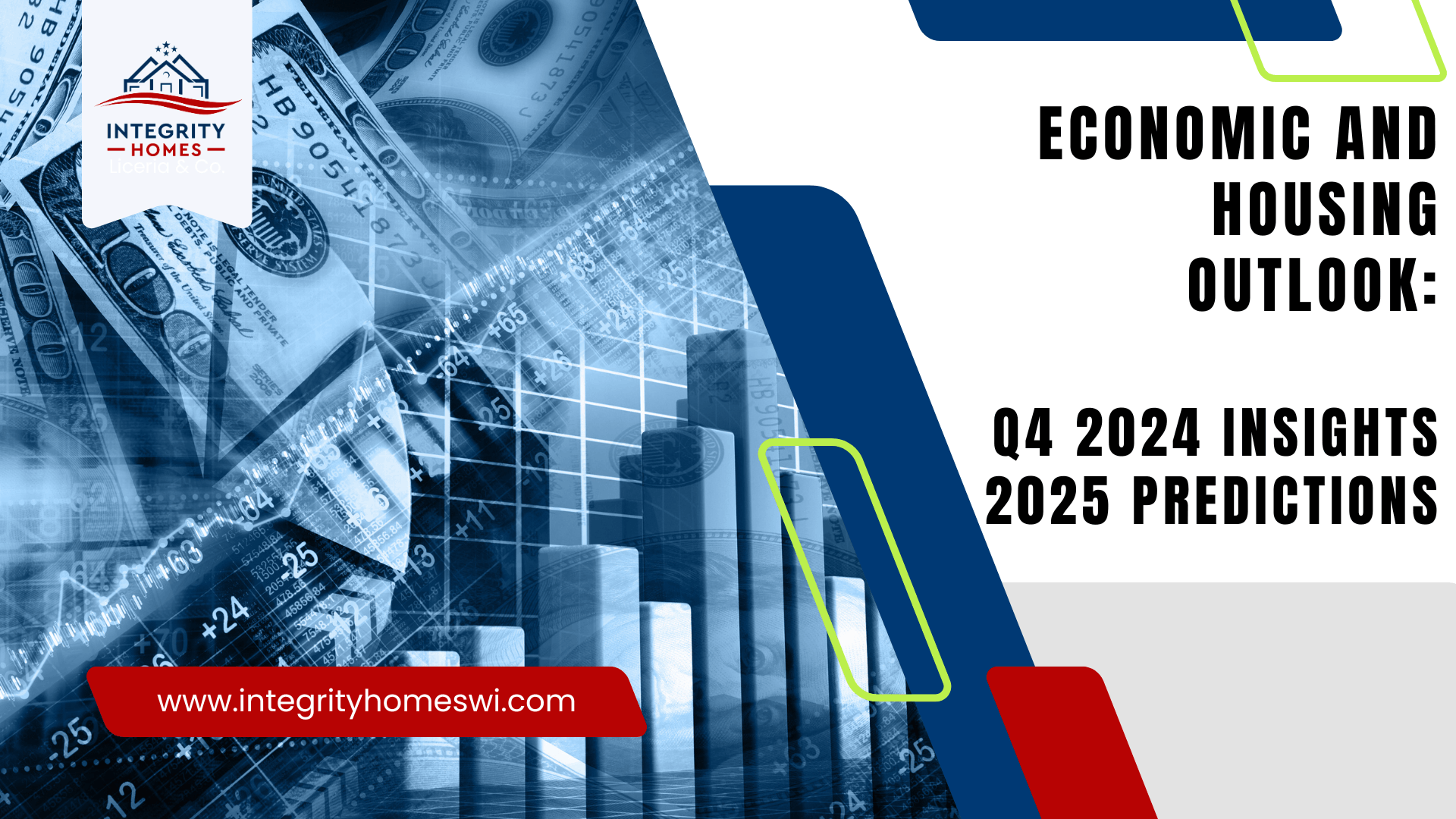A Nerd-tastic Breakdown of Economic and Housing Outlook for Q4 and Predictions for 2025

The U.S. economy is demonstrating remarkable resilience despite challenges such as high inflation, tight financial conditions, and ongoing uncertainty around interest rates. Retail sales, housing starts, and labor market trends all offer clues about where the economy is headed. This report examines how recent data points—from strong retail activity to a rebound in single-family housing starts—are shaping the economic and real estate landscape as we move toward 2025. Key insights from economists and industry experts provide additional context to understand what lies ahead for consumers and housing markets.
Retail Sales: A Resilient Consumer Amid Uncertainty
Retail sales rose 0.4% in September, with food services, personal care, and grocery stores showing significant strength. In contrast, big-ticket categories such as appliances and furniture experienced declines, underscoring the mixed nature of consumer spending. One potential driver for this trend is consumers preparing for hurricane season, which pushed sales higher in certain sectors. This steady retail activity supports expectations for a 3.2% annualized GDP growth rate in Q3.
Nathaniel Drake from Fannie Mae’s Economic and Strategic Research (ESR) Group notes, “This sustained consumption points to a consumer sector that has more staying power than anticipated, though we expect spending to moderate in the fourth quarter as tighter financial conditions begin to take effect.”
Key takeaway: Control group retail sales, which exclude food services, gas, and building materials, rose 0.7% in September, suggesting the economy remains on solid footing heading into Q4.
Housing Starts: Single-Family Rebound Amid Multifamily Weakness
Despite high borrowing costs, single-family housing starts increased by 2.7% in September to a seasonally adjusted annualized rate (SAAR) of 1.027 million. This marks a five-month high, following a sharp 16.1% jump in August as the market recovered from July's hurricane disruptions. Multifamily construction, however, continues to struggle, with permits down 8.9%, reflecting tighter financial conditions and concerns about oversupply in the rental market.
Mark Palim , Senior Economist at Fannie Mae , adds, “While builders are adjusting to higher interest rates, the underlying demand for single-family homes remains strong, driven by limited inventory and demographic tailwinds. Mortgage rates are expected to decline in 2025, which should further stimulate homebuying.”
Labor Market Strength: A Foundation for Real Estate Growth
The September labor market report surprised analysts, with 254,000 new jobs added, surpassing expectations. Construction employment has been a key driver, with the sector now employing 5% more workers than at the previous peak in 2006. This surge in employment is vital for alleviating supply bottlenecks in the housing market, where labor shortages have historically delayed projects and raised costs.
Anat Nusinovich , a housing market analyst, explains: “Increasing construction employment signals that housing supply could catch up with demand sooner than expected, particularly in metropolitan areas where job growth has accelerated.”
According to National Association of Home Builders (NAHB) data, builder confidence has risen to 43, a four-month high. This optimism is largely based on expectations that Federal Reserve Board rate cuts will improve financing conditions in 2025, encouraging both builders and buyers.
Mortgage Rates and Affordability Challenges
Mortgage rates remain elevated, currently averaging around 6.0%, though they are expected to fall to 5.7% by the end of 2025. High rates, coupled with rising home prices, have stretched affordability for many potential buyers. Builders and real estate professionals are closely watching these trends, as rate reductions could unlock pent-up demand.
Matthew Purdy, a Redfin Premier agent in Colorado, highlights the role of uncertainty: “Some buyers are waiting until after the 2024 election before making any moves. Others are waiting for mortgage rates to drop further. If rates stabilize, we could see a surge in homebuying activity next year.”
How Federal Reserve Policy Shapes the Market Outlook
The Federal Reserve’s recent 50 basis point rate cut in September signals the start of a gradual easing cycle, with two additional 25 basis point cuts expected before year-end. The Fed’s pivot toward easing reflects stabilizing inflation, which is projected to reach the 2% target by mid-2025. Lower rates will likely encourage home sales and new construction, alleviating some of the current affordability pressures.
Lisa Sturtevant , Chief Economist at Bright MLS, cautions: “While rate cuts are a positive development, it will take time for their effects to filter through to mortgage markets. Builders and buyers need to remain patient as we navigate this transition.”
The Impact of Construction Jobs on Housing Supply
Construction employment has risen by 16% since the start of the pandemic, with growth concentrated in high-demand regions like Cape Coral, FL, and St. George, UT. This surge in construction jobs is crucial for addressing housing shortages, particularly in metropolitan areas where population growth continues to outstrip housing supply.
Nusinovich notes, “The positive correlation between construction jobs and housing starts suggests that cities with robust job creation in the construction sector will experience faster residential growth. This bodes well for housing affordability in the long run.”
Economic Outlook: Resilience with a Cautious Eye on 2025
While the economy has shown resilience, analysts warn of potential slowdowns. The Fed’s rate cuts may not immediately translate into higher home sales, and multifamily construction could remain sluggish. However, the 2.3% GDP growth forecast for 2024 suggests the U.S. economy is stabilizing, with consumer spending and job growth acting as key pillars.
Palim concludes: “The economic fundamentals are solid, but the real estate market will depend heavily on how quickly mortgage rates decline and whether builders can keep pace with demand. We expect a more balanced market to emerge in 2025 as supply chains normalize and financing becomes more accessible.”
Conclusion
The U.S. economy appears well-positioned to weather near-term challenges, with retail sales, labor market strength, and builder optimism painting a positive picture for the housing market. However, affordability constraints and elevated mortgage rates remain hurdles. As the Fed eases rates and the labor market holds firm, 2025 could see a more balanced housing market, benefiting both buyers and builders.
For now, the economic outlook remains cautiously optimistic, with strong construction job growth and single-family starts leading the way toward a more stable housing sector.
John Reuter
Integrity Homes
Broker/Owner
608-669-4226
Real Broker, LLC
See Dane County, Wisconsin housing trends by clicking here! Current as of 10/20/2024.
Categories
- All Blogs (207)
- All Things Waunakee (7)
- Benefits (7)
- Communities (12)
- Decorating (7)
- Deployment (2)
- Easements (3)
- Energy Efficiency (4)
- First-Time Homebuyers (22)
- Home Inspection (1)
- Home Maintenance (1)
- Home Selling (19)
- Home Value (14)
- Homes for Heroes (8)
- Housing Assitance (7)
- Interest Rates (6)
- Market Trends (67)
- VA Loans (5)
- Veterans (8)
- Waunakee Housing Market (2)
- Well, Water, Septic Systems (4)
Recent Posts










GET MORE INFORMATION

